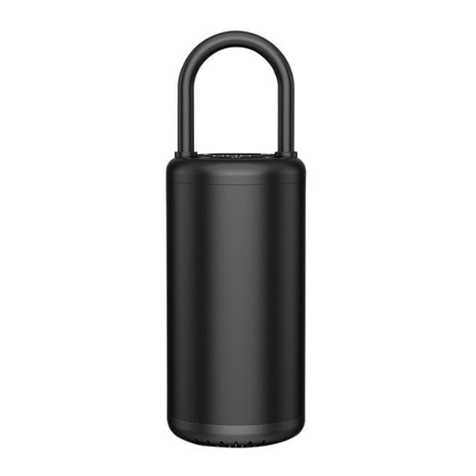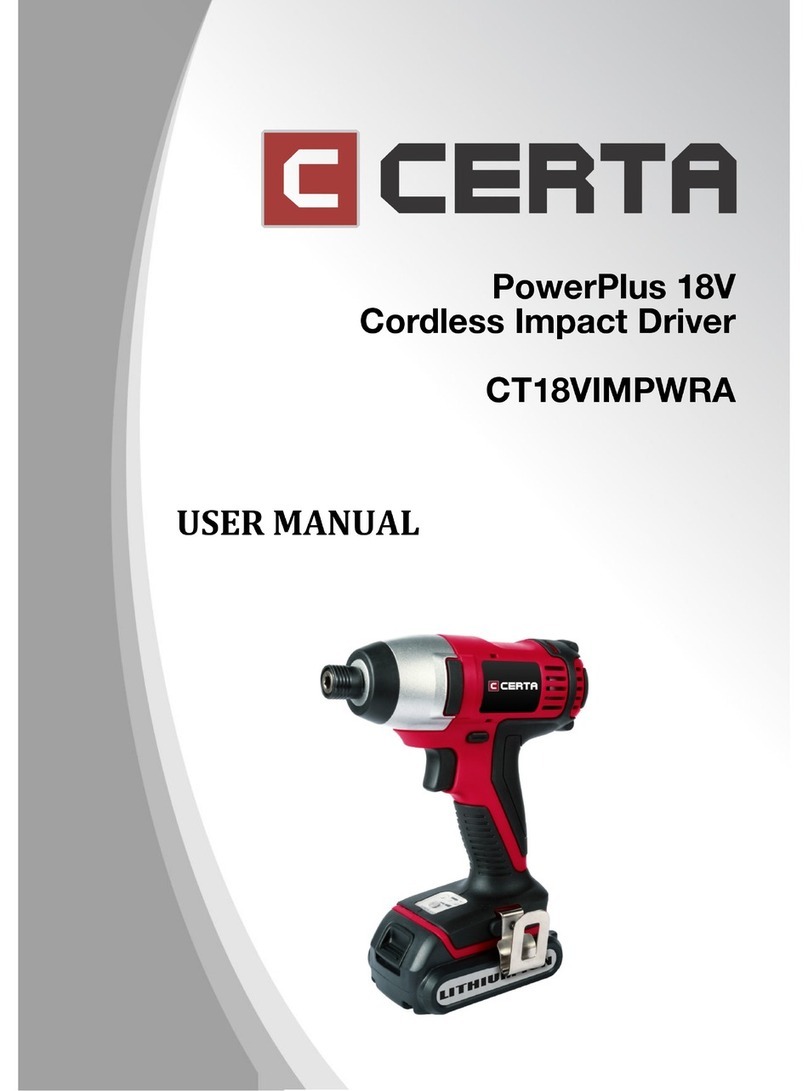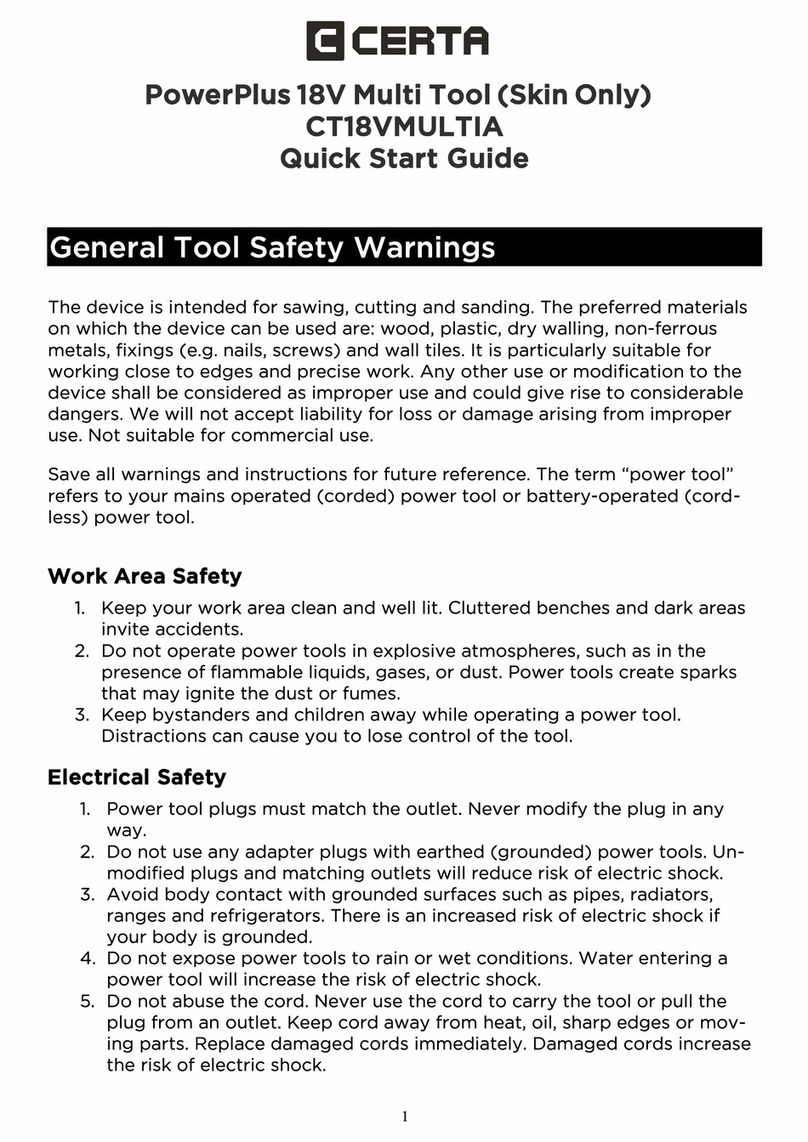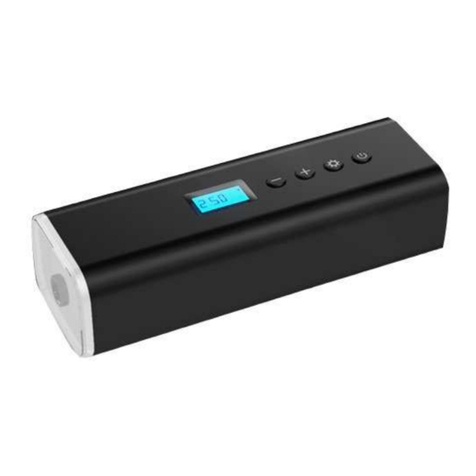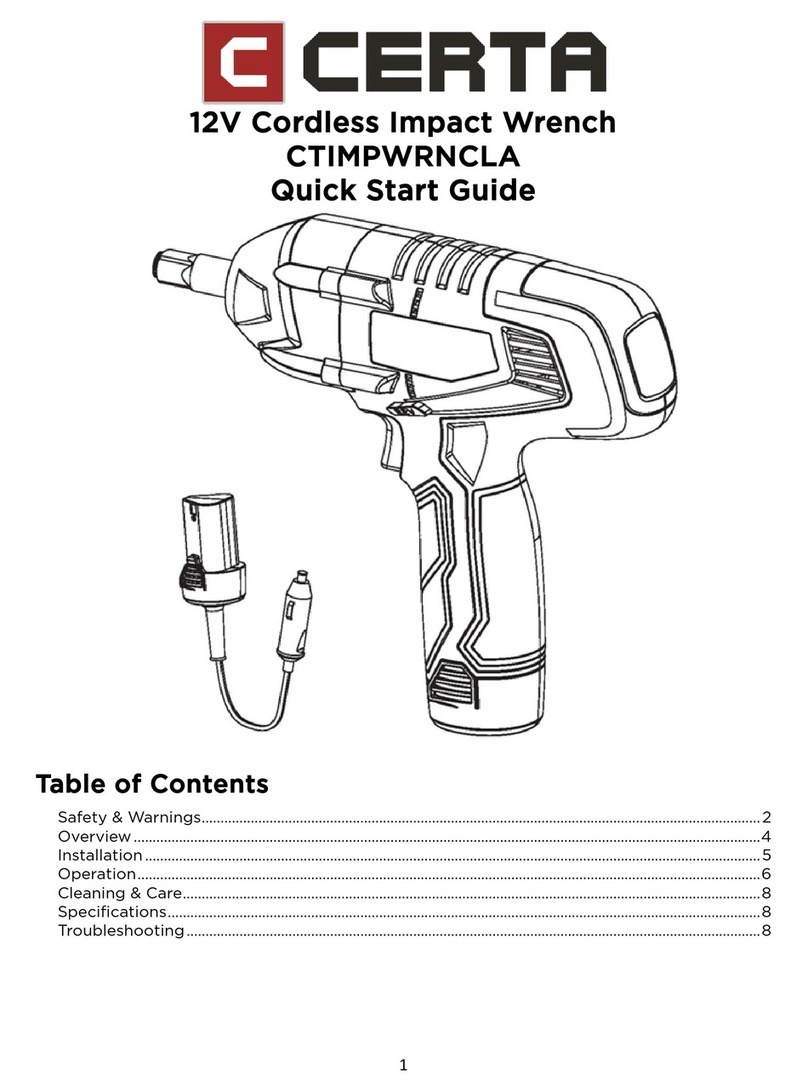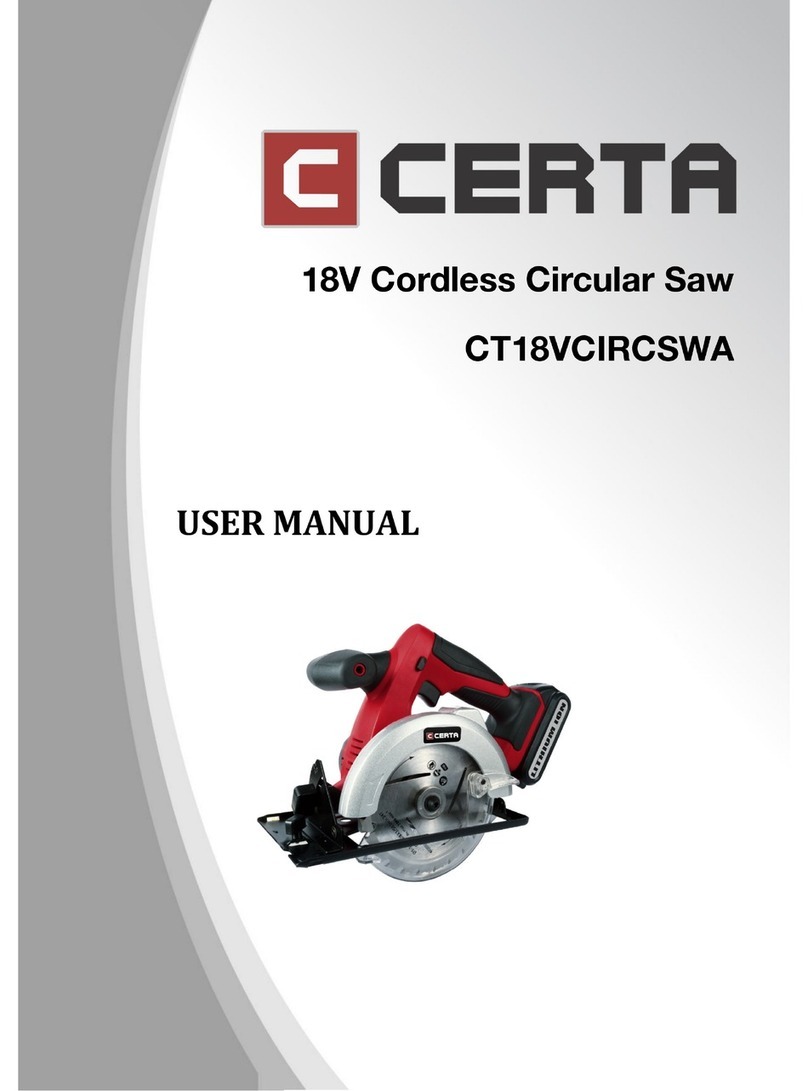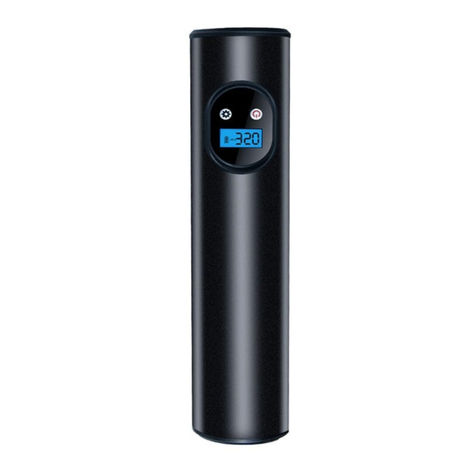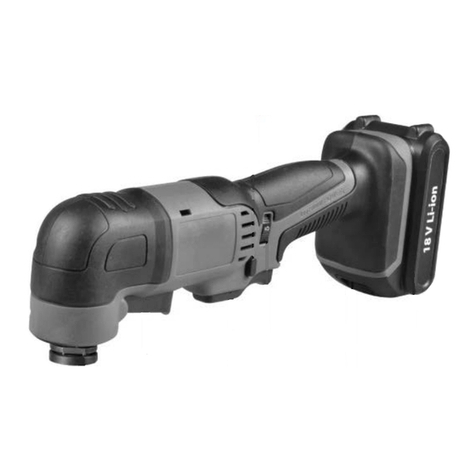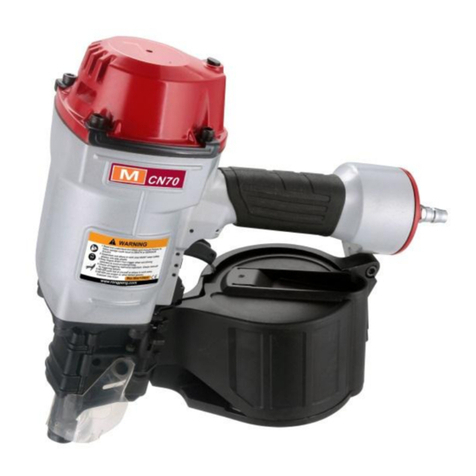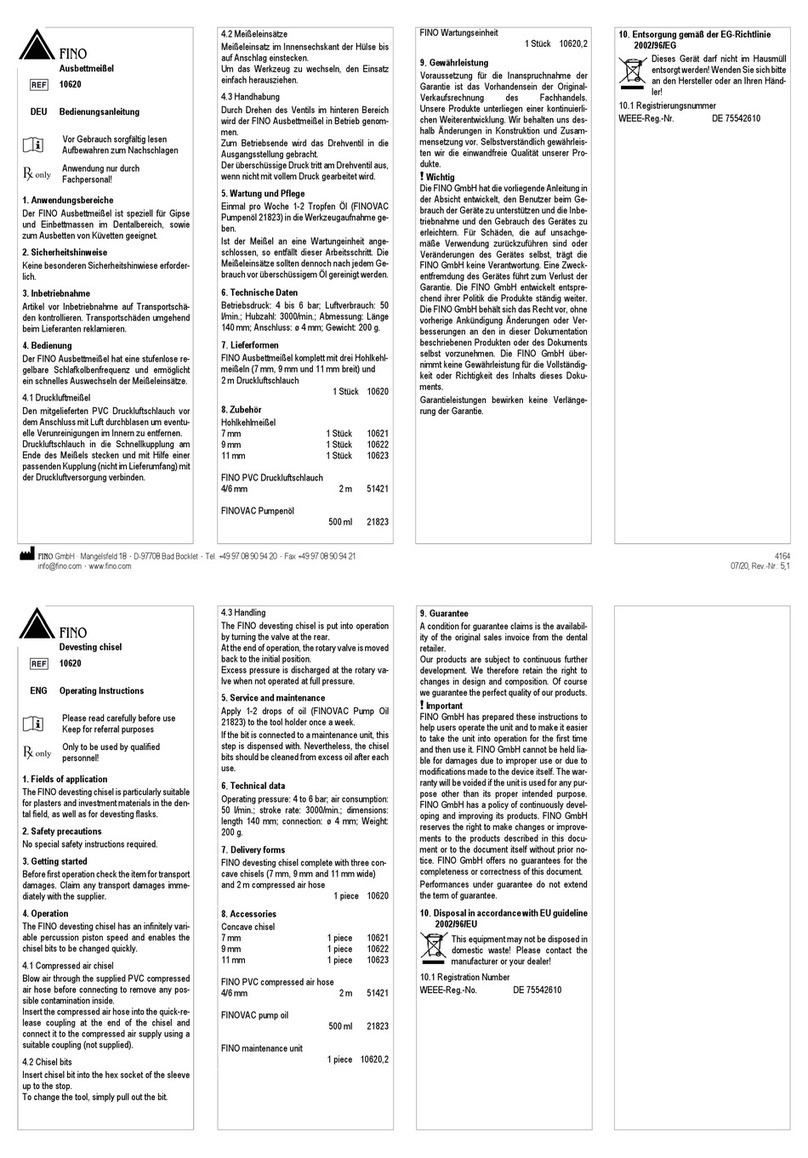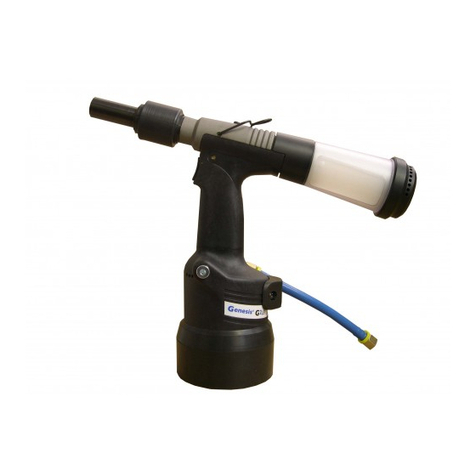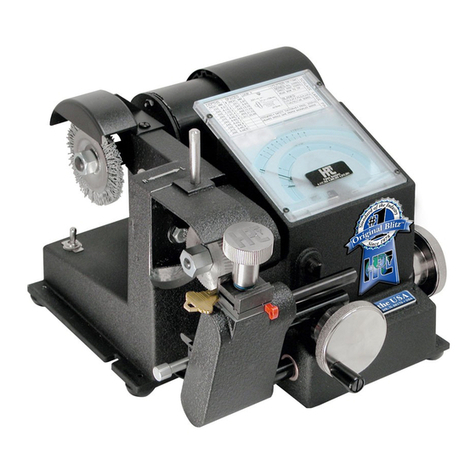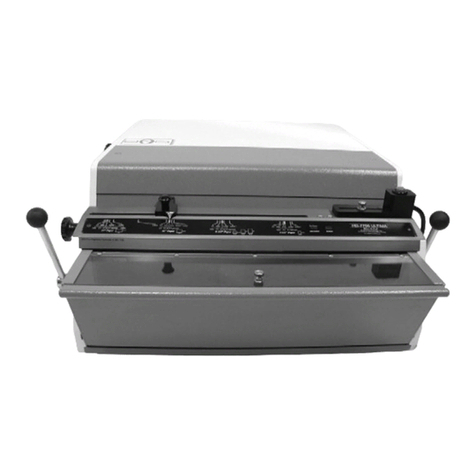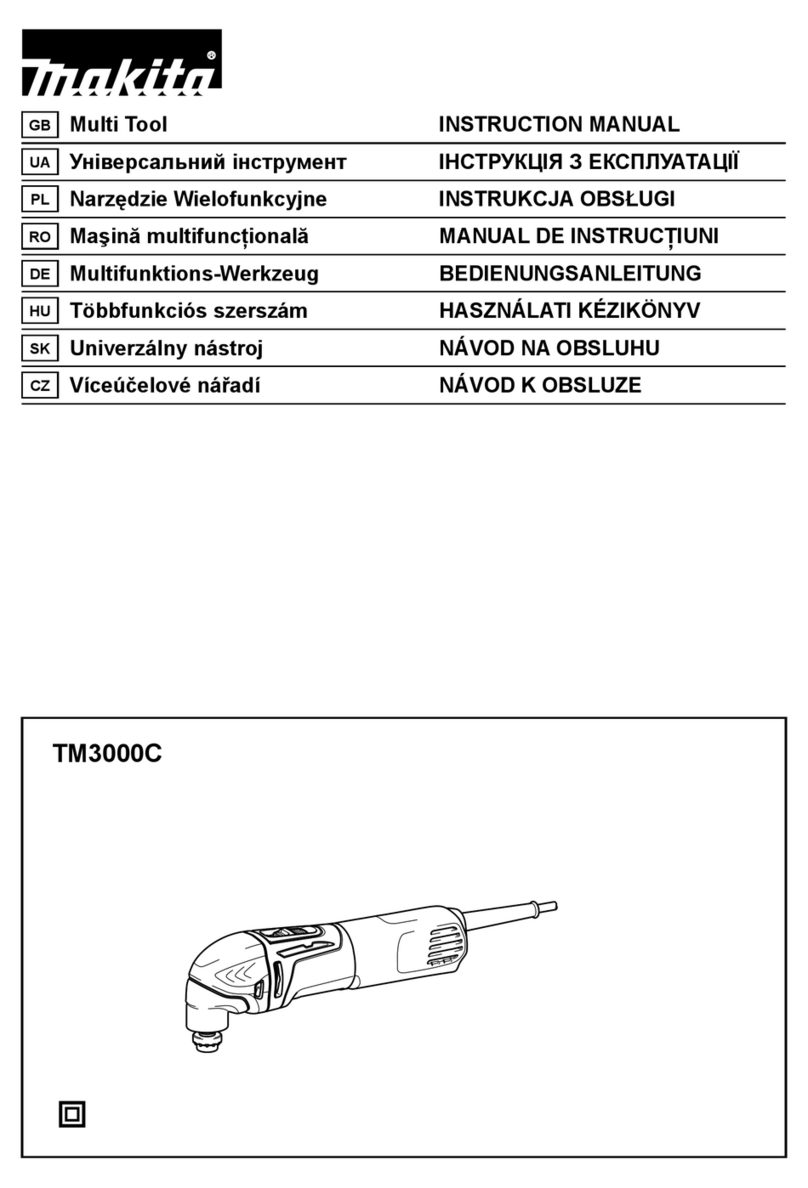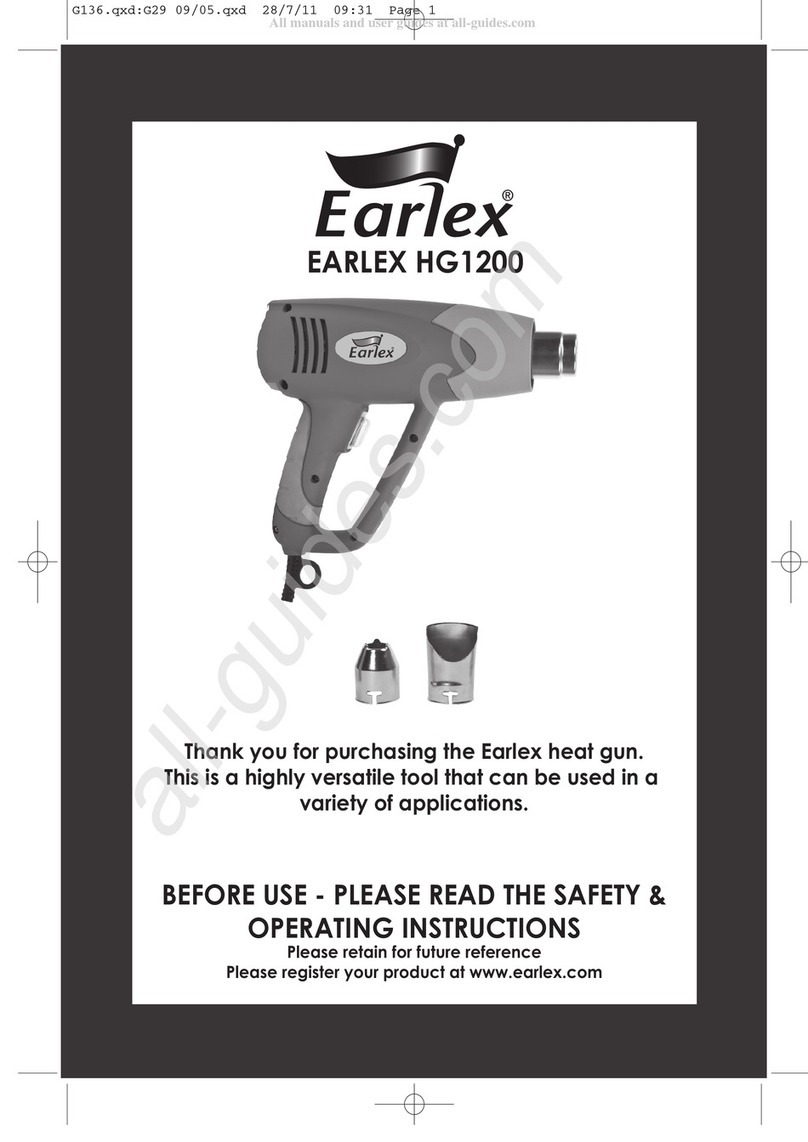Certa CTCHSH350WA User manual

350W CHAINSAW
SHARPENER
CTCHSH350WA


WARNING: Read all safety warnings, instructions, illustrations and specifications provided
with this power tool. Failure to follow all instructions listed below may result in electric shock,
fire and/or serious injury.
• Save all warnings and instructions for future reference.
• The term "power tool" in the warnings refers to your mains-operated (corded) power
tool or battery-operated (cordless) power tool.
Work area safety
• Ensure your work area is clean and well lit. Cluttered or dark areas invite accidents.
• Do not operate power tools in explosive atmospheres, such as in the presence of
flammable liquids, gases or dust. Power tools create sparks which may ignite the
dust or fumes.
• Keep children and bystanders away while operating a power tool. Distractions can
cause you to lose control.
Electrical safety
• This power tool plugs must match the power outlet. Never modify the plug in any
way. Do not use any adapter plugs with earthed (grounded) power tools.
Unmodified plugs and matching outlets will reduce risk of electric shock.
• Avoid body contact with earthed or grounded surfaces, such as pipes, radiators,
ranges and refrigerators. There is an increased risk of electric shock if your body is
earthed or grounded.
• Do not expose power tools to rain or wet conditions. Water entering a power tool
will increase the risk of electric shock.
• Do not abuse the power cord. Never use the cord for carrying, pulling or unplugging
the power tool. Keep cord away from heat, oil, sharp edges or moving parts.
Damaged or entangled cords increase the risk of electric shock.
• When operating a power tool outdoors, use an extension cord suitable for outdoor
use. Use of a cord suitable for outdoor use reduces the risk of electric shock.
• If operating a power tool in a damp location is unavoidable, use a residual current
device (RCD) protected supply. Use of an RCD reduces the risk of electric shock.
SAFETY & WARNINGS

Personal safety
• Stay alert, watch what you are doing and use common sense when operating a
power tool. Do not use a power tool while you are tired or under the influence of
drugs, alcohol or medication. A moment of distraction while operating power tools
may result in serious personal injury.
• Use personal protective equipment. Always wear eye protection. Protective
equipment such as a dust mask, non-skid safety shoes, hard hat or hearing
protection used for appropriate conditions will reduce personal injuries.
• Prevent unintentional starting. Ensure the switch is in the off position before
connecting to power source and/or battery pack, picking up or carrying the tool.
Carrying power tools with your finger on the switch or energising power tools that
have the switch on invites accidents.
• Remove any adjusting key or wrench before turning the power tool on. A wrench or
a key left attached to a rotating part of the power tool may result in personal injury.
• Do not overreach. Keep proper footing and balance at all times. This enables better
control of the power tool in unexpected situations.
• Do not wear loose clothing or jewellery. Keep your hair and clothing away from
moving parts. Loose clothes, jewellery or long hair can be caught in moving parts.
• If devices are provided for the connection of dust extraction and collection facilities,
ensure these are connected and properly used. Use of dust collection can reduce
dust-related hazards.
• Do not let familiarity gained from frequent use of tools allow you to become
complacent and ignore tool safety principles. A careless action can cause severe
injury within a fraction of a second.
Power tool use and care
• Always use the correct power tool for your application.
• The correct power tool will do the job better and safer at the rate for which it was
designed.
• Do not use the power tool if the switch does not turn it on and off. Any power tool
that cannot be controlled with the switch is dangerous and must be repaired.
• Disconnect the plug from the power source and/or remove the battery pack, if
detachable, from the power tool before making any adjustments, changing
accessories, or storing power tools. Such preventive safety measures reduce the risk
of starting the power tool accidentally.
• Store idle power tools out of the reach of children and do not allow persons
unfamiliar with the power tool or these instructions to operate the power tool. Power
tools are dangerous in the hands of untrained users.
• Maintain power tools and accessories. Check for misalignment or seizing of moving
parts, breakage of parts and any other condition that may affect the power tool’s
operation. Many accidents are caused by poorly maintained power tools. If
damaged, cease use immediately and contact Kogan.com for support.

• Keep cutting tools sharp and clean. Properly maintained cutting tools with sharp
cutting edges are less likely to seize and are easier to control.
• Use the power tool, accessories and tool bits etc. in accordance with these
instructions, taking into account the working conditions and the work to be
performed. Use of the power tool for operations different from those intended could
result in a hazardous situation.
• Keep handles and grasping surfaces dry, clean and free from oil and grease.
Slippery handles and grasping surfaces do not allow for safe handling and control
of the tool in unexpected situations.
Service
• Have your power tool serviced by a qualified repair person using only identical
replacement parts. This will ensure that the safety of the power tool is maintained.
• If the replacement of the supply cord is necessary, please contact Kogan.com for
support.
Safety instructions for cut-off machines
Cut-off machine safety warnings
• Position yourself and bystanders away from the plane of the rotating wheel. The
guard helps to protect the operator from broken wheel fragments and accidental
contact with wheel.
• Use only bonded reinforced cut-off wheels for your power tool. Just because an
accessory can be attached to your power tool, it does not assure safe operation.
• The rated speed of the accessory must be at least equal to the maximum speed
marked on the power tool. Accessories running faster than their rated speed can
break and fly apart.
• Wheels must be used only for recommended applications. For example: do not
grind with the side of a cut-off wheel. Abrasive cut-off wheels are intended for
peripheral grinding, side forces applied to these wheels may cause them to shatter.
• Always use undamaged wheel flanges that are of correct diameter for your
selected wheel. Proper wheel flanges support the wheel thus reducing the
possibility of wheel breakage.
• The outside diameter and the thickness of your accessory must be within the
capacity rating of your power tool. Incorrectly sized accessories cannot be
adequately guarded or controlled.
• The arbour size of wheels and flanges must properly fit the spindle of the power
tool. Wheels and flanges with arbour holes that do not match the mounting
hardware of the power tool will run out of balance, vibrate excessively and may
cause loss of control.
• Do not use damaged wheels. Before each use, inspect the wheels for chips and
cracks. If the power tool or wheel is dropped, inspect for damage or install an
undamaged wheel. After inspecting and installing the wheel, position yourself and
bystanders away from the plane of the rotating wheel and run the power tool at
maximum no load speed for one minute. Damaged wheels will normally break
apart during this test time.

• Wear personal protective equipment. Depending on application, use face shield,
safety goggles or safety glasses. As appropriate, wear dust mask, hearing
protectors, gloves and shop apron capable of stopping small abrasive or workpiece
fragments. The eye protection must be capable of stopping flying debris generated
by various operations. The dust mask or respirator must be capable of filtrating
particles generated by your operation. Prolonged exposure to high intensity noise
may cause hearing loss.
• Keep bystanders a safe distance away from work area. Anyone entering the work
area must wear personal protective equipment. Fragments of workpiece or of a
broken wheel may fly away and cause injury beyond immediate area of operation.
• Position the cord clear of the spinning accessory. If you lose control, the cord may
be cut or snagged and your hand or arm may be pulled into the spinning wheel.
• Regularly clean the power tool’s air vents. The motor’s fan can draw the dust inside
the housing and excessive accumulation of powdered metal may cause electrical
hazards.
• Do not operate the power tool near flammable materials. Do not operate the power
tool while placed on a combustible surface such as wood. Sparks could ignite
these materials.
• Do not use accessories that require liquid coolants. Using water or other liquid
coolants may result in electrocution or shock.
• Operate the grinder within its indicated design specification. Your grinder has a
plate indicating:
1. Size of arbour.
2. No-load speed in revolutions per minute.
3. Proper grinding wheel.
• Keep work area clean. Cluttered areas and benches are safety hazards. Ensure
that the working area of the grinding wheel is free of tools or other objects before
starting up the grinder. Frequently clean grinding dust from beneath the grinder.
• Do not use power tools in damp or wet environments or expose them to rain. Be
sure to keep the work area well lighted.
• Check the position of the power cord during operation making sure that it remains
outside the range of action of the grinding wheel and is not under tension. Never
operate in the vicinity of other electrical cables/cords.
• Ensure the workshop is child proof with padlocks and master switches. Also, do not
allow anyone but the operator to touch the power cord or remain in the close
vicinity of the grinder while operating.
Note:
The power supply cable/cord comes complete with terminals and circuit protection.
Connecting the power supply cable/cord terminals directly into the switch
completes the electrical system for the grinder. The final electrical connection to the
outlet should be made in such a way as to prevent damage by individuals or
passing vehicles that could endanger both them and the operator.

• Before starting the grinder, ensure that the grinding wheel is correctly secured and
positioned in the up, rest position. Do not over-tighten the wheel mounting flange
nut.
• Use the vice to hold the chain. It frees both hands for moving the grind head/wheel
down to grind the chain.
• Never stand on an unstable platform.
• Always work in a stable and safe position. Serious injury could occur if the grinder is
tipped or if the cutting tool is unintentionally contacted.
• Maintain tools with care. Keep tools sharp and clean for best and safest
performance. Follow instructions for lubricating and changing accessories.
WARNING: The grinder must be used only in a place that is protected from
dust and dampness, that is well-lit, out of the reach of children and away
from gases or other flammable or explosive liquids.

Part List
1
Handle
2
Grinding disk lateral guard
3
Depth adjustment screw
4
Cutting edge angle adjustment wheel
5
Base
6
Screw clam cradle
7
Angle adjustment wheel
8
Scale
9
Clamping lever
10
Mean distance adjustment screw
11
Guide flap valve
12
Screw clamp
13
Guide position set screw
14
Setting screw
15
Grinding disk
16
Grinding disk protective enclosure
OVERVIEW

Mounting Base Unit to Bench/Wall
1. Mount base assembly on a bench top or post, using x2 lag bolts or nuts and bolts
(not provided). Mount at chest height for best visibility and ease of operation.
2. For bench mounting, ensure the base unit extends out from the bench edge
clearing the extending tabs of the base unit as shown (Figure 1).
3. For wall application (Figure 2) use lag or expansion bolts (not provided).
Note: For wall mounting, the position adjustment knob (
4
) (Figure 4) will need to be
replaced with the supplied nut and washer (
2 & 3
).
INSTALLATION

Mounting Motor/Head Assembly to Base Unit
1. Mount pivot point on the motor/head assembly into the pivot hole located in the
centre of the base assembly back (Figure 3).
2. Insert bolt through the holder at the base of the motor/head assembly into the
base assembly back (Figure 3).
3. Attach washer and knob onto bolt on the back side of the base assembly back
(Figure 4).

Mounting Operating Handle
1. Attach operating handle to motor/head (Figure 5).
Selecting and Mounting the Grinding Wheel
1. For the appropriate size grinding wheel;
2. Ensure that the grinding wheel is in perfect condition. Hang the wheel by the
centre hole and tap it lightly with a metal object on one side near the perimeter. If a
flat tone is heard it may be cracked or broken. Do not use! (Figure 6).

3. Insert the bolt through the arbour (Figure 7).
4. Position the grinding wheel inside the shield guard assembly onto the motor flange
and insert arbour bolt, with washer, through the wheel centre hole into motor shaft.
Tighten the arbour bolt, with the large 5.5mm Allen wrench (Figures 8 and 9). Do
not over -tighten this bolt, as doing so may cause damage to the wheel, rendering
it unusable.

Dressing the Grinding Wheel
1. Set the motor/head to the 90-degree position.
2. With the grinder in the “OFF” position. Check the profile of the wheel using the
special template (provided with this unit). If the wheel profile is not correct
according to the template, the wheel will need to be dressed until it does fit the
proper profile.
3. Connect the power cord to the outlet and turn the grinder to the “ON” position.
4. From a safe distance at the side of the unit, observe the grinding wheel as it turns
to make sure it does not oscillate either laterally or transversally. If wheel turns in a
true and even rotation, allow wheel to turn for one minute before wheel is dressed.
Note: If the wheel does not run true, turn the unit off, troubleshoot and correct the
problem before proceeding.
5. Begin dressing the full radius of the wheel with the use of the dressing brick
provided with this unit (Figure 11). For best results use quick, light strokes with the
brick to form the desired profile (Figure 10).
6. Tu r n t h e u n i t OFF and use the special orange template to re-check the profile of
the wheel (Figure 11).
Note: If necessary, turn electrical power on and repeat steps 5 and 6 until desired
profile of the wheel is obtained.
11

\\
Grinding a Chain
There is risk of serious personal injury for chain saw operators or bystanders from improperly
sharpened saw chain. Read and follow all manufacturer’s instructions for your saw chain.
• For best results it is recommended that the chain be clean before grinding.
• Always wear approved eye protection during all steps of the grind operation and
when the grinding wheel is in motion.
• Grind all cutters of the same type (left or right) before positioning the grinding
wheel to the opposite side.
• When changing the grind position, ensure the unit is turned to the “OFF” position
(white on/off switch or toggle on/off switch located on the top of the motor support
arm) and the wheel has come to a full stop before making any adjustments.
• To a v o i d o ve r l o a d i n g t h e m o t o r a n d t o p r e v e nt d a m a g e t o t h e s a w c h a i n , r e m o v e
only the minimum amount of material necessary and do not grind any one tooth
for too long a period. Using 2-3 light strokes per cutter will help avoid the possibility
of any cutter burns.
• Do not use cooling liquids while grinding.
• Replace worn grinding wheels when the diameter of the wheel reaches 70mm
(2.8”).
OPERATION
WARNING: Immediately unplug the power cord if the motor does not
turn the wheel when the grinder power switch is in the “on” position.

Grinding for Bench or Wall Mounted Workstations
Note: All adjustments must be made prior to applying power to the unit.
1. Position the saw chain to be ground onto the vice (Figure 12).
2. Setting top-plate cutting angle:
Set grinder head angle to correct degree (Figure 13). Adjustment is made by loosening
adjustment knob, at the back end of the grinder and rotating the grinder head to the
desired angle. (Figure 14).

3. Set cutter top-plate grind angle by rotating vice assembly to the right of centre (0°)
(Figure 15).
4. Rotate vice assembly to the left of centre (0°) (see Figure 16).
5. Setting vice-tilt angle:
The cutting chain vice assembly has a tilting feature, (Figure 17), that is used to
control the side plate hook angle on some chains. Use centre mark for chains
requiring 90°

5. Tilt vice to INWARD position for left-hand cutters (Figure 18).
6. Tilt vice to OUTWARD position for right hand cutters (Figure 19).
7. Set the chain stop. Using the cutting chain stop centring knob, centre the chain
stop behind the cutter as shown (Figure 20). Make final adjustments to the chain
stop by adjusting the knob at the back of the chain stop support.

8. Centre the cutting chain in the vice.
Loosen lock nut with 10mm wrench (Figure 21). Centre chain by using 5.5 Allen
wrench (Figure 22). Once centred, retighten nut.
Note: This setting will keep the left and right hand cutters equal when grinding top-
plates.

9. Set grind depth. Locate the chain cutter for grinding. Lower the grinding wheel
(with motor off) into the gullet (Figure 23). Set depth of grind by using the depth
adjustment knob (Figure 24).
10. Grind the cutters. Grind all right-hand cutters, rotate vice and grind all left-hand
cutters.

ASSEMBLY
Table of contents
Other Certa Power Tools manuals
Popular Power Tools manuals by other brands

EINHELL
EINHELL TE-CD 14,4-2 2B Li Original operating instructions
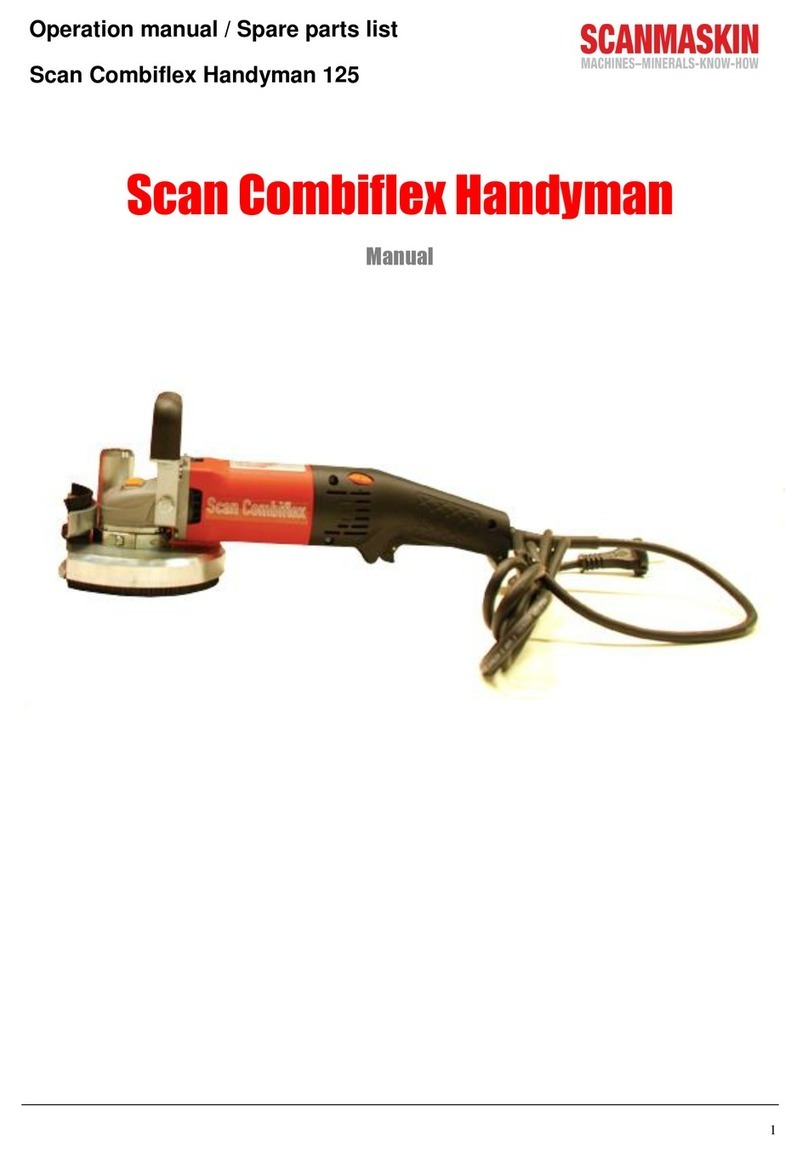
SCANMASKIN
SCANMASKIN Scan Combiflex Handyman Operation manual & spare parts list

Fast Mover
Fast Mover FMT7560 Product instruction manual

Castellari
Castellari RYNO Series manual
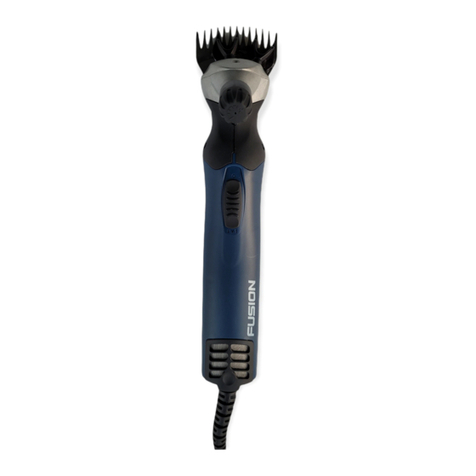
Wahl
Wahl Fusion C302-S2 instruction manual

Bosch
Bosch 1587AVSP-1 - 5 Amp Top-Handle Jig Saw parts list
